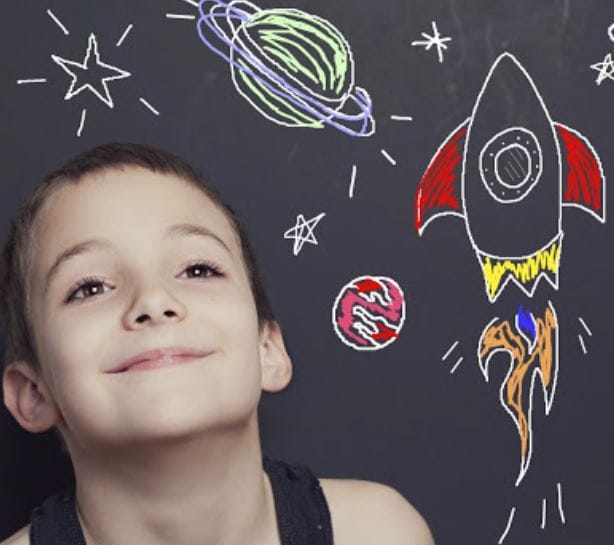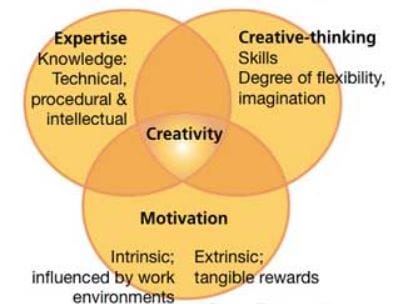 Child Creativity Picture Credit: seniorcorrespondent.com
Child Creativity Picture Credit: seniorcorrespondent.com
Introduction
Fuelled by big-data, scientists are training AI-based models that help provide recommendations to human decision makers in a variety of domains. These AI-driven decision-making processes include domains such as credit decisions, employee hiring or more familiar domains such as personalized shopping and music recommendation. When it comes to raw intelligence, AI is a great social equalizer as machine-intelligence is becoming a commodity accessible to everybody. No longer do individuals require a high-level academic degree to access, analyse, and digest huge volumes of data. The competitive advantage that has historically been tied to high IQ levels has decreased in importance as AI has levelled the intellectual playing field. As the relative importance of IQ has declined, creativity and imagination have gained value and esteem. A 2016 World Economic Forum report concluded that creativity will be the 3rd most important skill in the workplace in 2020, raising in importance from 10th position in 2015. Creativity is clearly the skill of the future.
We are born with creativity
Children are highly creative, and they naturally express their creative talents. However, they cannot use their talents and creativity for something productive and useful that can contribute to the development of human civilization. Dr. George Land, senior fellow of the University of Minnesota and fellow of the New York Academy of Sciences who died in 2016, developed a test to assess the creativity of 1,600 children ranging in ages from three-to-five years old. He later re-tested the same children at 10 years, and again at 15 years of age. Passing the creativity test showed the following age distribution:
- 98% of children passed at age 5
- 30% of children passed at age 10
- 12% of children passed at age 15
- 2% of 280’000 adults passed the test
“What we have concluded,” George Land wrote, “is that adults are ‘grown up children’ who have lost their creativity because creativity has been buried by rules and regulations. Our educational system was designed during the Industrial Revolution over 200 years ago training us to be good workers and to follow instructions. Since education is still based on the principles of the industrial age, the outcomes are not suitable for our 21st century world, where rules and recommendations are increasingly processed by intelligent machines.” Our society needs individual talent who is highly creative and who can innovate. While life-long learning is an accepted fact to sustain the workforce, few discuss the reasons for the lack of creativity in adults. To get there we need a fundamental shift in the positioning of creativity vis-à-vis intelligent machines, revamping our educational system starting in kindergarten all the way to the university level.
The impact of creativity
In the age of AI, our great distinguishing capacity vis-à-vis intelligent machines is creativity. A recent PwC report explains, “The rise of artificial intelligence is driving a new shift in value creation focused on sentiments more intrinsic to the human experience: thinking, creativity and problem-solving.” Creative expert and anthropologist Dr. Michael Bloomfield envisions tomorrow’s new reality as follows: “The typical CV or resumé five years from now might look quite different compared to today’s CV. Your experience and competence will count for a whole lot less if a computer program, just released, can do most of your work at a fraction of the cost. You might want to state where you got your creativity training, what level you reached and what creative ideas you have had as a result”. Creativity is our best defence against obsolescence by AI. As we are incentivized and rewarded for creativity, it is inevitable that we will increase our efforts to enhance our own imaginative and original thought processes. Given that research has shown that creativity can be learned, it is only a matter of time before we see soaring levels of creativity transpire. While AI has enormous potential to help us in supporting creativity, 75% of people believe they are not living up to their creative potential. We have been focusing on whether AI will overtake humans. Instead, we ought to focus on determining how to work together with AI. With the right perspective, AI will amplify and augment our creative potential and as a result lead to better decisions.
Creativity in a corporate setting
Today – to live up to the challenges of a global society – we need creative leaders, creative employees, creative entrepreneurs. Many organizations try to catch up with addressing this challenge but there is a need for a more comprehensive approach for shaping and leveraging creativity. The very first step to do so is to take it for granted that everyone is creative. However, not everyone is creative in the same way. Every person has an innate inclination to be creative in one area, while they might not want to get creative in another. The challenge for leaders and managers is to discover the creativity potential for each person and help them develop it further. At the same time, we need to let go of the image of a lonely creator hiding in an ivory tower of his genius. While there are still pockets of creativity where this might be the case, in most creative endeavours you will need a creative team collaborating to solve a problem at hand. As much as it is vital to develop individual creativity, it is as vital to advance the collaborative skill in any single person. Only the combination of the two increases chances for true innovation. Creativity is a skill that can be developed and a process that can be managed. It begins with a foundation of knowledge, learning a discipline and mastering a way of thinking. We learn to be creative by experimenting, exploring, questioning assumptions, using imagination and synthesizing information.
The process to enhance creativity
The creativity process considers alternative options based on a well-defined purpose, stepping through the following procedure:
- Problem definition: Figuring out the problem one is trying to solve. Many assume this stage to be simple – we think we know the problem. Research shows that successful creative people spend a significant amount of time in defining the problem which, as a result, creates better solutions.
- Ideation: Putting forward various ideas for solutions to a problem at hand. Having many ideas does not mean that they are all good. The crucial concept of ideation is convergent thinking, being able to select the good ideas from the bad ones.
- Validation: Testing and validating the result of the creative process. How do you evaluate ideas that are utterly new? One way might be to first expose the idea to a group of early adopters who, by their sheer urge to look for novelty, are more apt to judge the potential of an innovative idea.
Adding AI to the creative decision-making process
Decision-making often implies anything but logic, leading to bad decisions with no coherent framework to follow. Adding creativity as a way to improve decision-making involves three components: expertise, creative-thinking and motivation as depicted by the following graph (Source: T.M. Amabile, Harvard Business Review, Oct. 98):

While expertise and extrinsic motivation can be supported by the application of AI, creative-thinking, sometimes also referred to as ‘Design-Thinking’, implicates a human quality of creativity which so-far cannot be replaced by intelligent machines. Applying creativity in decision making is a fundamental human process as we interact with the world. One way to characterize decisions is to differentiate between structured, semi-structured or unstructured decisions. Structured decisions have a known precise solution and do not require AI-based decision support. Semi-structured problems have some agreed-upon decision parameters and yet require human preferences for a decision. In this case, optimally balancing machine intelligence with human creativity, is likely to produce the best result. Unstructured decision problems have no-agreed-upon criteria or solution and rely on the preferences of the decision maker. There is no specific problem to be solved, hence the full potential of human creativity can be used to uncover new insights so far untouched by existing knowledge or experiences. Artists, for example, create their works with this mindset. Some painters or musicians resort to AI as a tool to express their creative ideas. There is an ongoing debate if the results should really be considered art as an expression of human creativity.
Conclusion
Fuelled by continuing advances in computational neuroscience and AI research, the debate comparing machine creativity with human creativity is likely to accelerate. Creativity is one of the defining features of human beings. The capacity for genuine creativity, the kind of creativity that updates our understanding of the nature of being, that changes the way we understand what it is to be beautiful or good or true—that capacity is at the heart of what it is to be human. However, in respect to the practical implications of this debate, one also needs to consider the socioeconomic positioning of creativity. In the early 20th century, Harvard Professor Joseph Schumpeter introduced the economic theory of creative destruction, to describe the way in which old ways of doing things are endogenously destroyed and replaced by the new. Creativity and associated decision making play a vital role in the recombination of elements to produce new technologies, products and services that lead to economic growth. The rise of Start-Ups and Spin-Offs is just one indicator of a paradigm shift that is driven by creativity and innovation.
So far my experience has been that my creativity can develop within the program’s frames, my mind has to work along the computer’s or the software’s programs or algorithms, not the other way round. When they change programs or “updates” my mind encounters difficulties and my creativity is out of ( the) windows….